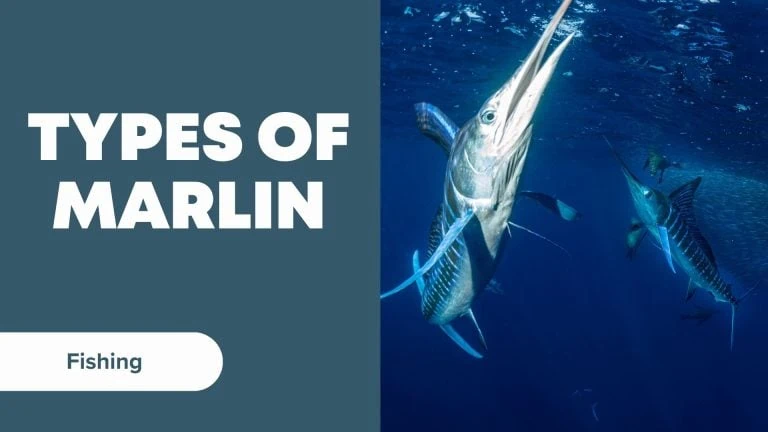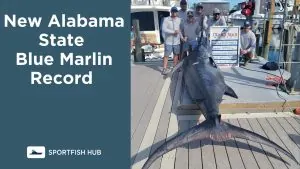Welcome to the incredible world of marlin, some of the most amazing and awe-inspiring fish you’ll find beneath the ocean’s surface. You might be curious, though: how many different types of marlin are actually out there.?
In this blog post, we’ll dive into the unique characteristics of the different types of marlin – Blue Marlin, Black Marlin, Striped Marlin, and White Marlin – that make them such a prized catch among sport fishing aficionados.

Key Takeaways
- There are four main types of Marlin: Blue Marlin, Black Marlin, Striped Marlin, and White Marlin. Each species has unique physical characteristics and habitats that make them a prized catch for sport fishermen all over the world.
- While marlin are popular gamefish, it’s important to practice conservation measures such as catch-and-release techniques to protect their population from overfishing. Engaging in sustainable fishing practices will ensure these majestic creatures continue to thrive in our oceans.
- Blue Marlin is one of the most coveted species among sport fishermen worldwide due to its size and acrobatic maneuvers during battle. However, they are listed as vulnerable due to overfishing, making it essential for anglers to be mindful when targeting this magnificent oceanic predator.
- Anglers can use different techniques like trolling or deep dropping with specific lures or bait based on each type of marlin’s feeding habits and migration patterns. Understanding these behaviors can improve the chances of catching these elusive creatures while bolstering sustainability efforts at the same time.
Overview Of The Different Types Of Marlin
In the following sections of the article, we’ll explore the various species of marlin – from the cobalt blue Atlantic Blue Marlin to the slender-billed Striped Marlin – and provide insights into their physical characteristics, habitat, popularity in sport fishing, and conservation efforts. Whether you’re a seasoned angler or just curious about these magnificent creatures that roam our oceans’ depths, this article is not one to miss!
Blue Marlin
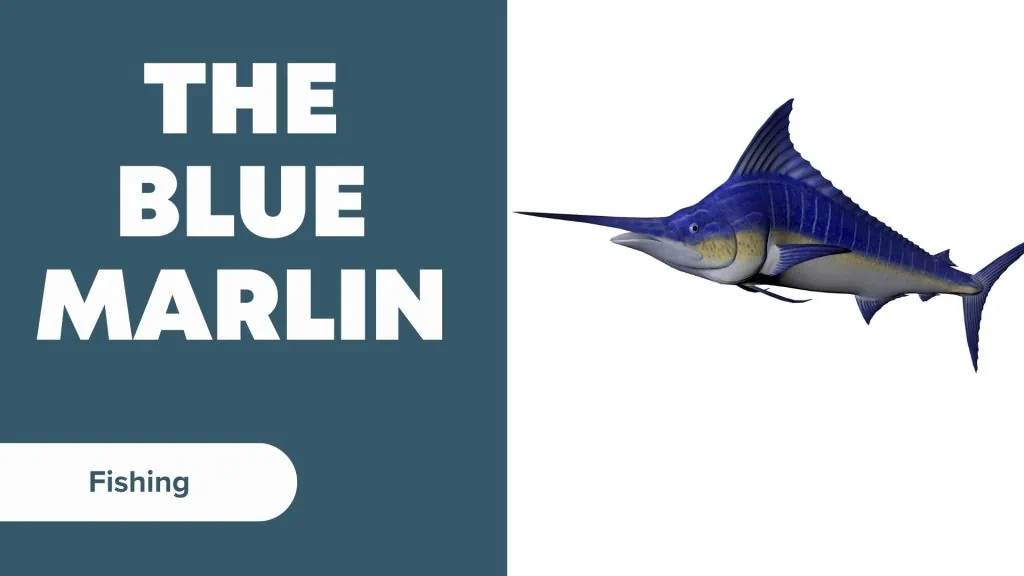
- Habitat: Native to the tropical and temperate waters of the Atlantic, Pacific, and Indian Oceans
- Appearance: Cobalt blue color on top, silvery white belly, muscular body
- Size: Can grow up to 14 feet in length and weigh over 1,900 pounds
- Fishing experience: Challenging fights when hooked, a desirable catch in sport fishing due to rod-bending strength and acrobatic maneuvers (including breathtaking jumps)
- Sustainability: U.S. wild-caught Pacific blue marlin are responsibly harvested under rigorous regulations set forth by the U.S government
- Conservation status: Vulnerable according to the IUCN Red List
Black Marlin
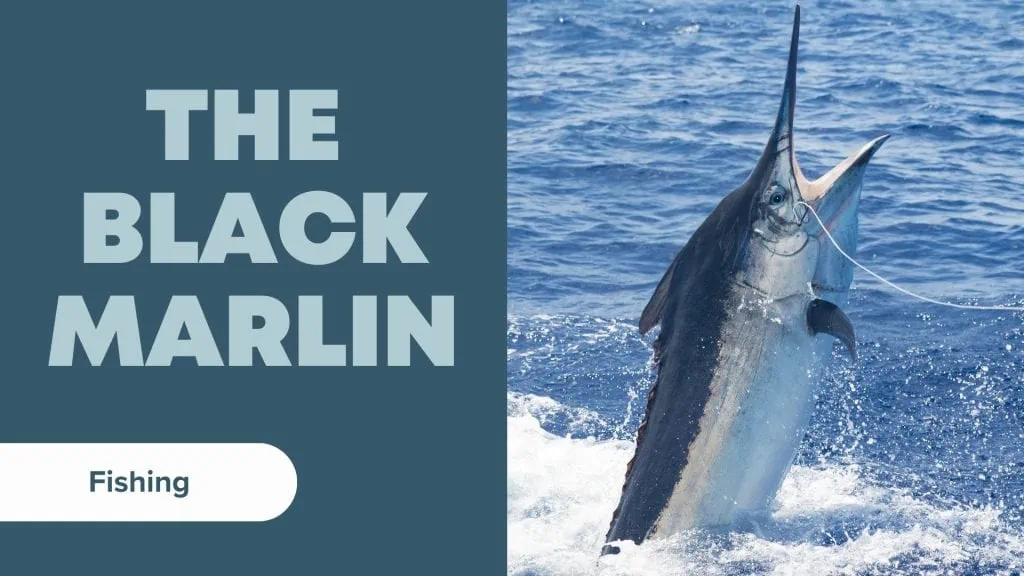
- Habitat: Tropical waters of the Indian and Pacific Oceans
- Appearance: Dark blue-black and silver, larger than Blue Marlin, with non-retractable fins
- Size: Can grow up to 16 feet in length and weigh over 1,500 pounds
- Diet: Prey on tuna, squid, and flying fish
- Fishing experience: Unforgettable challenge due to sleek body, incredible speed (up to 82 mph), stunning acrobatics, and rod-bending strength during battles out at sea
- Fishing techniques: Trolling or deep dropping along migration patterns near Central America or Australian coastlines
- Conservation status: Data deficient according to the IUCN Red List
Striped Marlin
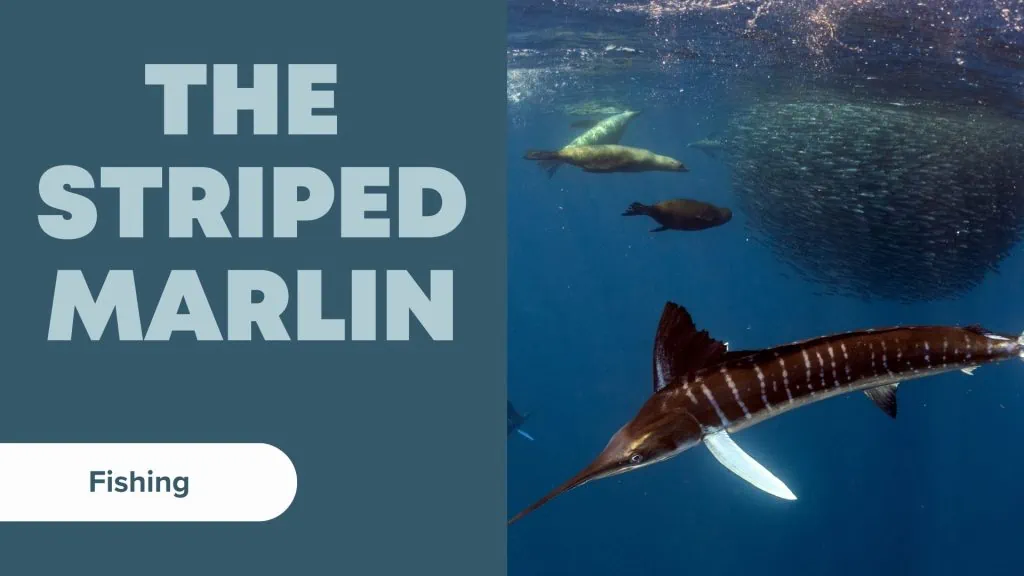
- Habitat: Tropical to temperate Indo-Pacific oceans
- Appearance: Bluish coloring above with white below, distinctive pale vertical bars on their sides
- Size: Can grow up to 13 feet in length and weigh up to 450 pounds
- Diet: Pursue prey like squid, flying fish, and dorado in depths up to 289 meters
- Fishing experience: Known for thrilling acrobatics when hooked, exceptional swimmers, rarely seen close to coastal waters
- Conservation status: Least concern according to the IUCN Red List
White Marlin
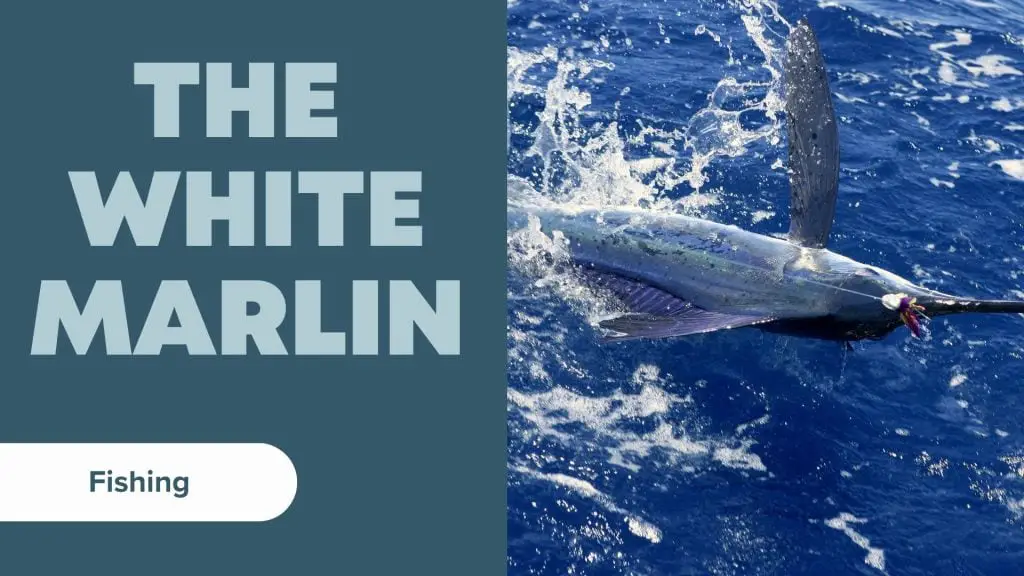
- Habitat: Warm ocean waters around the world, primarily in the Atlantic Ocean
- Appearance: Dark blue to chocolate brown upper body, silvery-white belly, rounded and wide pectoral and pelvic fins, two anal fins
- Size: Can grow up to 9.8 feet in length and weigh up to 180 pounds
- Diet: Feed on small fish, squid, and crustaceans
- Distinguishing features: Differentiated from other marlin by fin morphology
- Similarities with Blue Marlin: Elongated body, elongated upper jaw with lethal bill
- Conservation status: Vulnerable according to the IUCN Red List
FAQ
What is the rarest type of Marlin?
The rarest type of Marlin is the White Marlin, which are mainly found in only the Atlantic and Caribbean Ocean.
What Is The Best Tasting Marlin?
If you were to eat a Marlin, Striped Marlin is going to be the Best Tasting of any Marlin fish you can eat because they are known to have more of a tender flesh.
Can you keep a marlin if you catch it?
In many cases you are allowed to keep a Blue Marlin if you catch it, but unless it is a very large fish that you are taking in to weight and donate the meat to the locals, it is highly frowned upon. In the case of the Dominican Republic, it is illegal in all cases and you will either be fined, arrested, or immediately deported.
Physical Characteristics And Habitat Of Each Type
Each type of marlin varies in physical characteristics and habitat. The blue marlin is known for its size and acrobatic maneuvers, while the black marlin has a sleek body and pectoral fins that aid in jumping and thrashing.
The striped marlin’s vertical stripes make it easy to distinguish, while the smaller white marlin has a light blue color and a slender bill.
Blue Marlin
Blue marlin are arguably the most coveted and iconic billfish species among sport fishermen worldwide. These sleek, cobalt blue fish can grow up to 14 feet long and weigh over 2,000 pounds, making them one of the largest open oceanic fish species.
Blue marlin are native to the Atlantic, Pacific, and Indian Oceans and have a distinctive appearance with elongated upper jaws that form a lethal bill. They typically inhabit waters exceeding 70 degrees Fahrenheit and migrate seasonally across entire ocean basins in search of warmer temperatures.
To catch these fast-swimming predators, anglers use trolling techniques with lures or baits mimicking their favorite food, such as squid or flying fish. However, it’s essential to practice catch-and-release measures when targeting this vulnerable species due to their current endangered status resulting from overfishing practices in recent years.
U.S wild-caught Pacific blue marlin is sustainably managed under U.S regulations aimed at ensuring they stay protected from commercial fishing pressure while allowing recreational anglers a chance to experience their thrilling acrobatic maneuvers on specialized fishing trips in places like Hawaii or Costa Rica’s Pacific coastlines; In addition, Blue Marlin help control populations of smaller fish species within their ecosystem by preying on Swordfishes and Spears which often feed on juvenile fishes that cause an imbalance of marine life.In short,Bule Marlin is one of the most important yet vulnerable deep-sea predators whose significance cannot be ignored by Sport-fishermen interested in sustainable fishing practices for future generations to come.
Black Marlin
The black marlin, also known as Istiompax indica, is one of the largest billfish species and can be found in the tropical and subtropical waters of the Pacific and Indian Oceans.
It has a distinctive cobalt blue color on its back with a silvery white underbelly. Known for its incredible speed and acrobatic maneuvers, this species requires strong tackle to handle its power.
The black marlin has an elongated upper jaw that forms a lethal bill used to stun or spear its prey. They are open oceanic fish species that feed on squid, flying fish, dorado, and other small tuna-like fishes but can grow up to 1,500 pounds in weight, making them formidable hunters.
Striped Marlin
The striped marlin is a popular game fish among anglers due to its acrobatic maneuvers and challenge during the fight. Found in tropical and subtropical regions of the Pacific and Indian oceans, these pelagic billfish can be identified by their bluish color above and white below, with pale vertical bars.
Striped marlin are typically smaller than other types of marlin, with their weight not exceeding 125 kg (275 lbs). These fish are known for their distinct swimming behaviors that include diel depth distributions and excursions around the top of the thermocline.
White Marlin
The White Marlin, also known as Kajikia Albida, is a subtropical billfish found in the western Atlantic from Nova Scotia to Argentina. They are considered one of the smallest marlin species, typically measuring up to 9 feet and weighing an average of 80-90 pounds.
White Marlin are known for their speed and agility, making them an exciting catch for fishermen. Their diet primarily consists of schooling flying fish, squid, small tuna, and mahi-mahi.
Interestingly enough, they are batch spawners that shed batches of hydrated oocytes in separate spawning events.
Popularity In Sport Fishing
Anglers all over the world are drawn to catching marlin, and each different species presents its own unique challenge, making them a popular gamefish.
Techniques For Catching Each Type
- 1 Blue Marlin
- Trolling is the most popular technique used for catching blue marlin.
- Use large lures to attract the marlin and mimic their natural prey, such as flying fish or squid.
- Deep dropping can also be effective, especially when targeting larger marlin.
- When a blue marlin takes the bait, drop your rod tip and let the marlin run with the line before setting the hook.
- 2 Black Marlin
- Use live baitfish such as bonito, skipjack tuna, or mackerel to target black marlin.
- Trolling with lures can also be effective, but make sure to use larger baits and lures than you would for other species.
- Black marlin are strong fighters, so be prepared for a long battle when you hook one.
- 3 Striped Marlin
- Trolling with artificial lures or live bait is the best way to target striped marlin.
- Look for areas where there are sharp changes in water temperature or color, as these can indicate areas where striped marlin may be feeding.
- Striped marlin are known for their acrobatic maneuvers once they are hooked, so be ready for some aerial displays.
- 4 White Marlin
- Live bait such as ballyhoo or squid is often used to target white marlin.
- Trolling with small lures can also be effective, but make sure they are light enough so that they don’t spook the fish.
- When a white marlin bites, do not set the hook immediately but give it time to swallow the bait before reeling in.
Remember that sustainability should always be at the forefront of your mind when fishing for any species of marlin. Always release any fish that you do not plan on eating, and make sure to follow local regulations and guidelines. By practicing responsible fishing techniques, we can help protect these magnificent species for generations to come.
Records And Achievements
Each type of marlin has distinct records and achievements that fishing enthusiasts strive to surpass. The world record for Blue Marlin is held by angler Paulo Amorim, who caught a staggering 1,402-pound fish off the coast of Brazil.
Black Marlin holds the title of largest recorded game fish ever caught on rod and reel – a colossal 1,560-pounder hooked by Alfred Glassell in Cabo Blanco, Peru. Striped Marlin’s IGFA All-Tackle world record stands at 494 pounds caught in New Zealand by Trevor Norton.
The Atlantic White Marlin may be the smallest marlin species, but it still commands respect with the all-tackle world record standing at 161 pounds caught off North Carolina’s Outer Banks by Corey Shultz.
Conservation And Sustainability
Conservation and sustainability are critical factors in the sportfishing industry, particularly with marlin species. While considered a pinnacle of offshore game fishing, overfishing has threatened the population of these majestic creatures.
The United States leads conservation efforts for white marlin, which has a vulnerable status due to overfishing and environmental threats. Regulations ensure responsible harvesting and monitoring of wild-caught Pacific blue marlin populations, making them a smart seafood choice.
It is crucial now more than ever that those who love fishing participate in conservation efforts to help preserve the beautiful oceanic environment for generations to come.
Conclusion: Importance Of Protecting Marlin Species
In conclusion, the different types of marlin are truly majestic creatures that fascinate fishing enthusiasts all over the world. From the powerful and sleek blue marlin to the smaller yet fierce white marlin, each species has its unique characteristics and habitat preferences.
However, as much as we love catching these fish for sport or food, it’s important to remember their vulnerability and take measures towards conservation and sustainability.
By practicing catch-and-release techniques and supporting scientific research on migration patterns and feeding habits, we can ensure that future generations will have the opportunity to appreciate these amazing creatures in their natural habitats.

